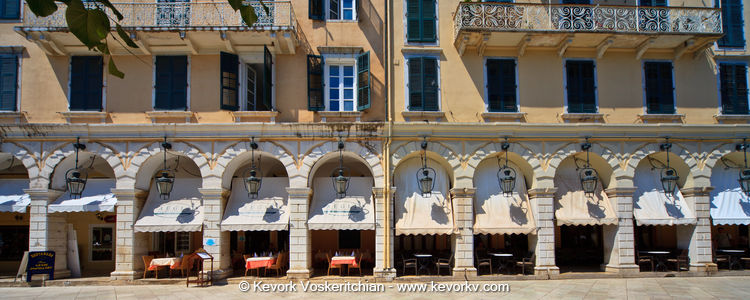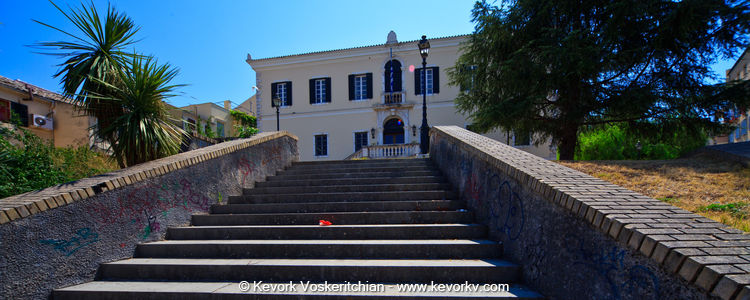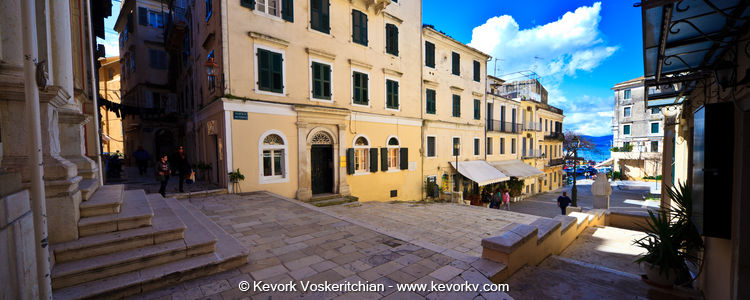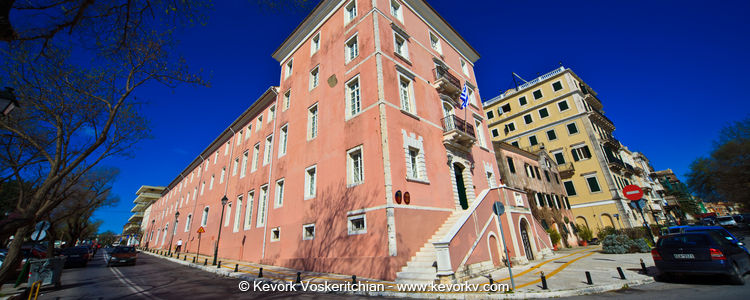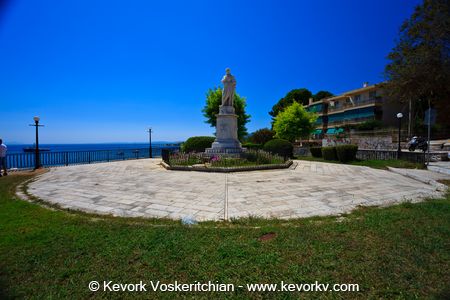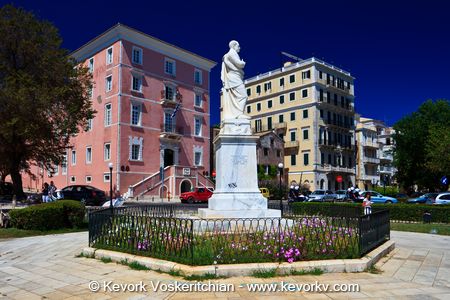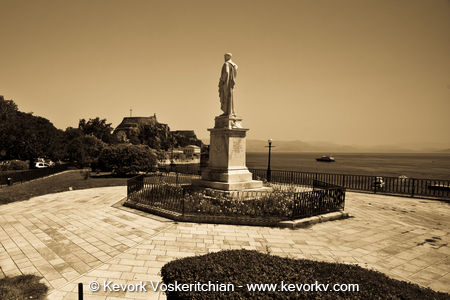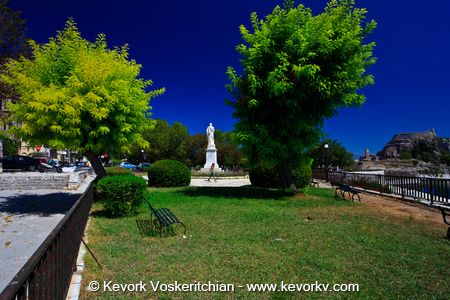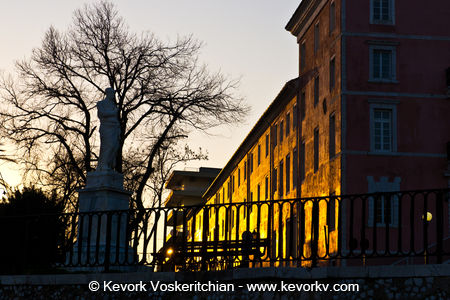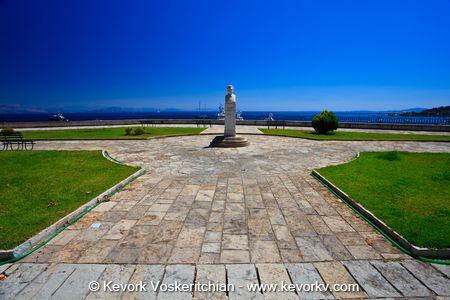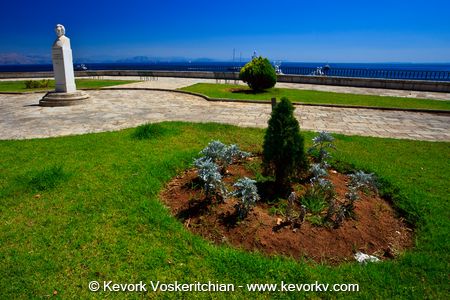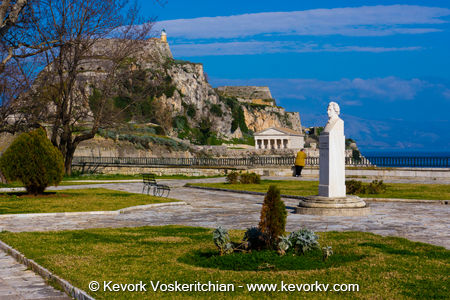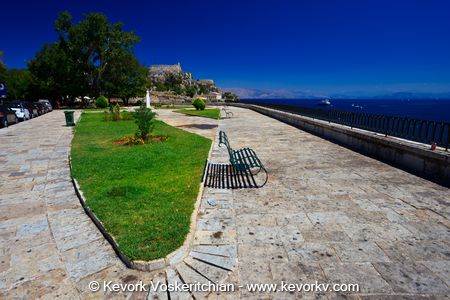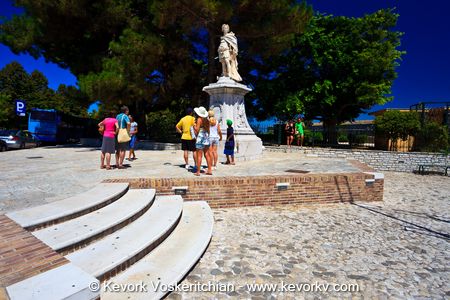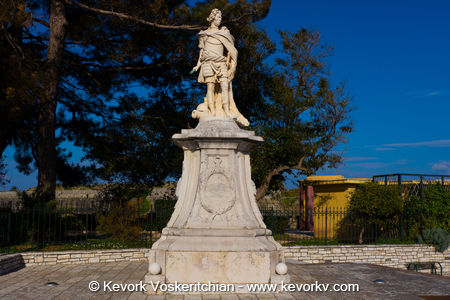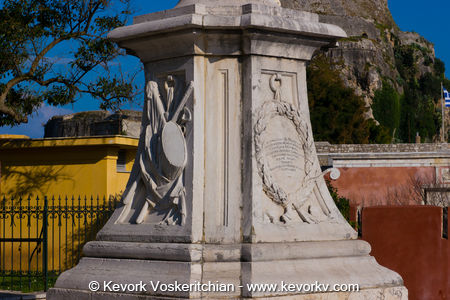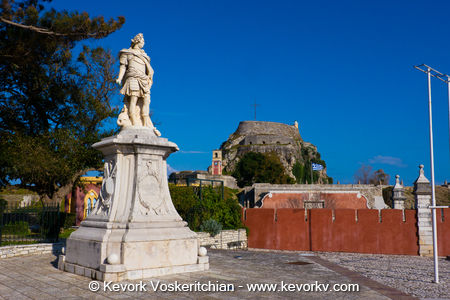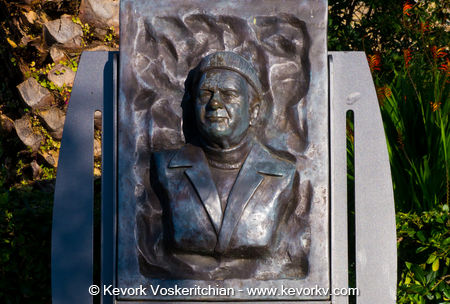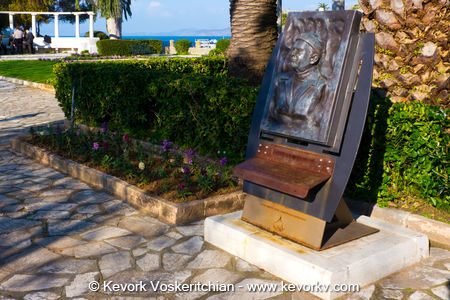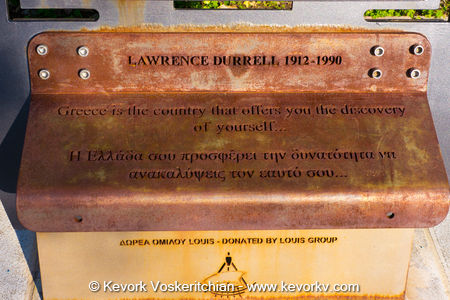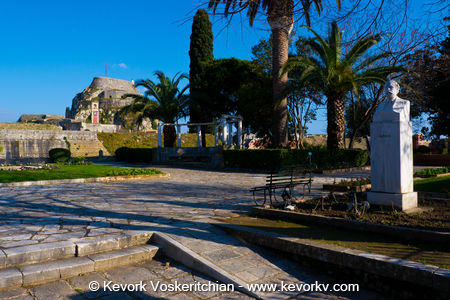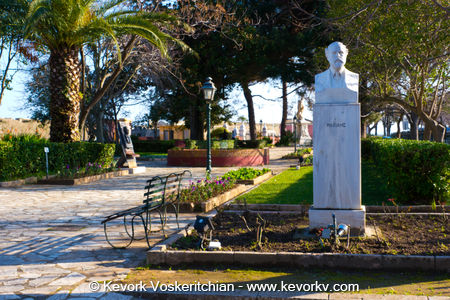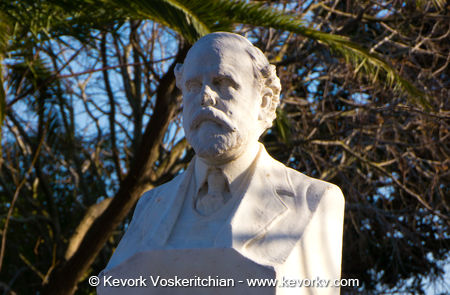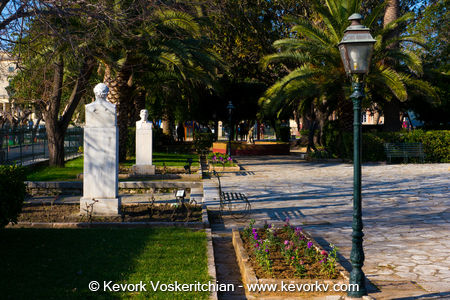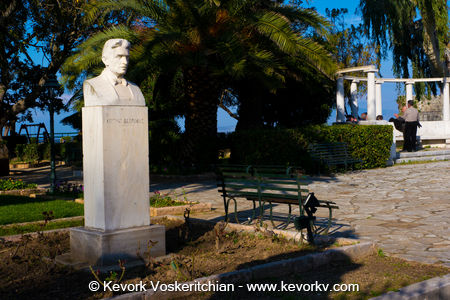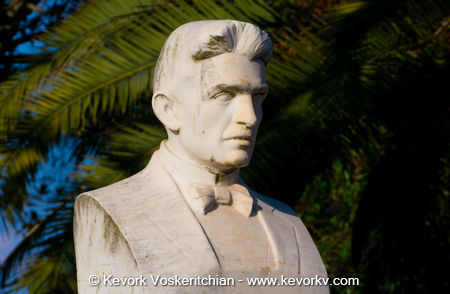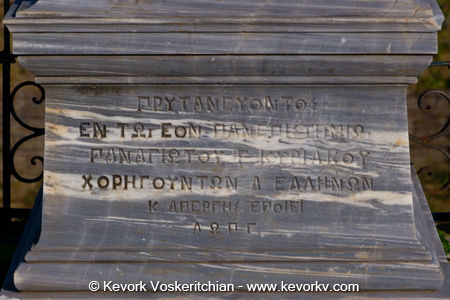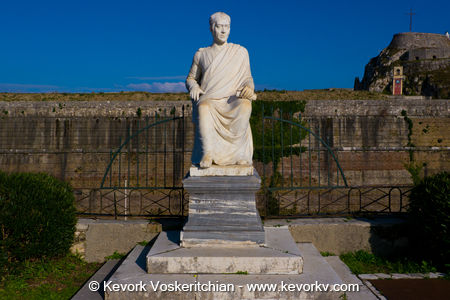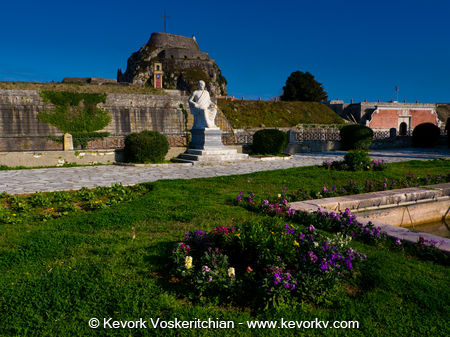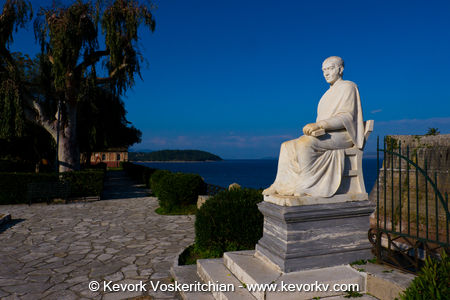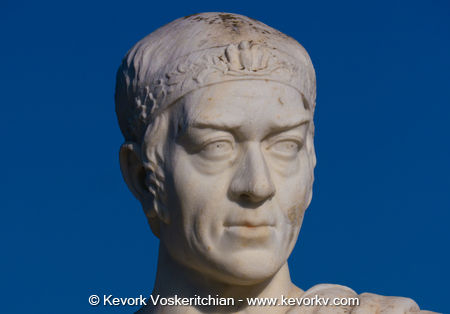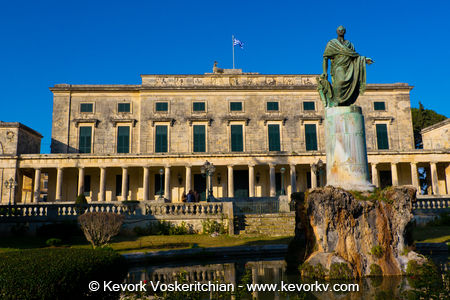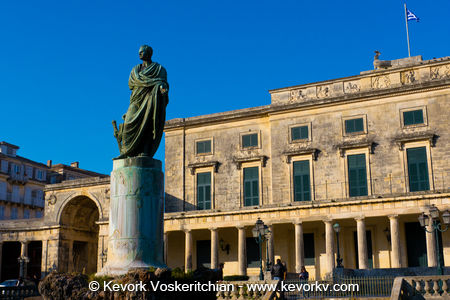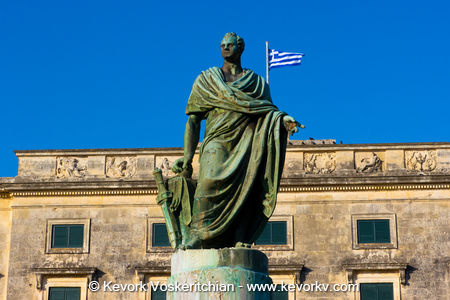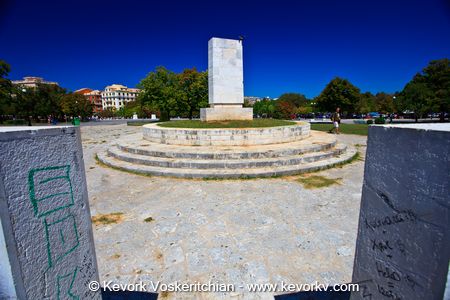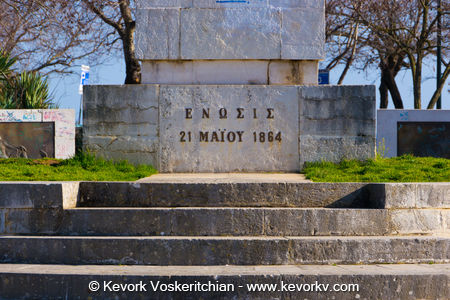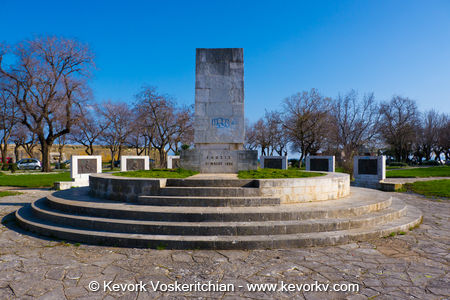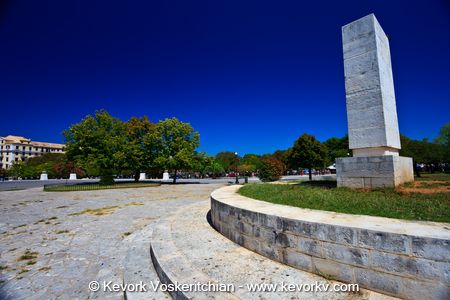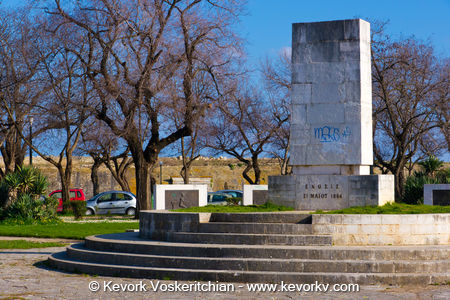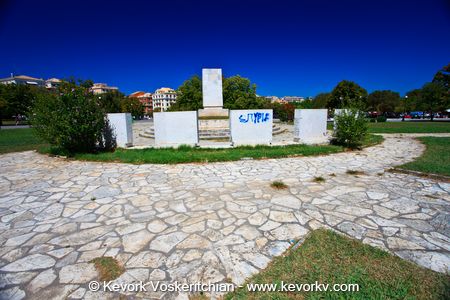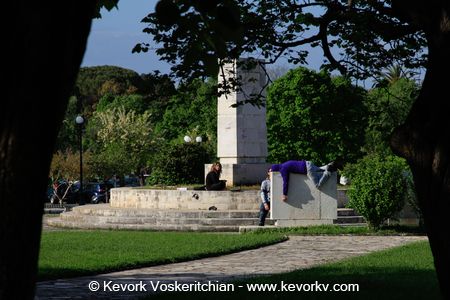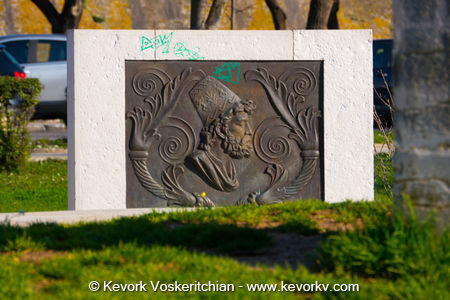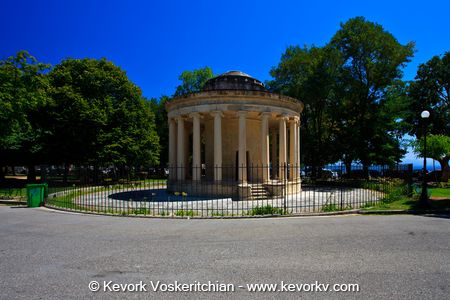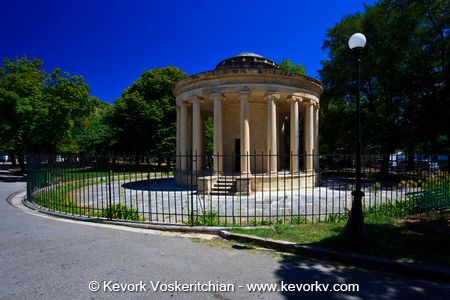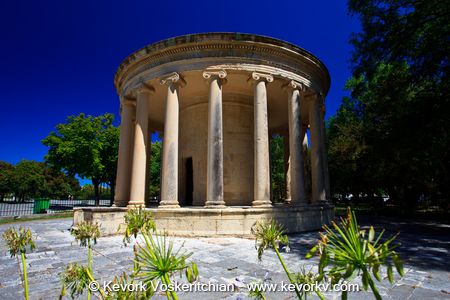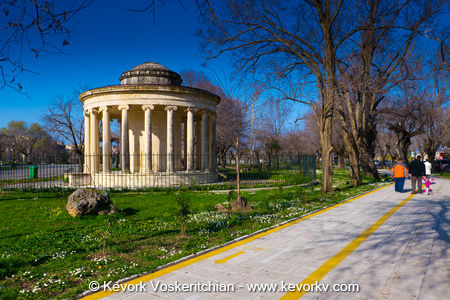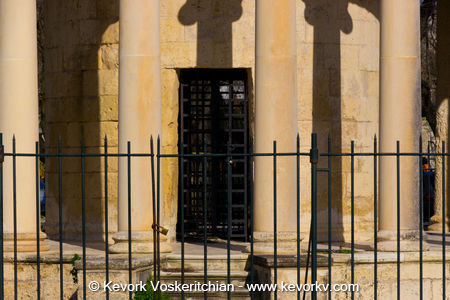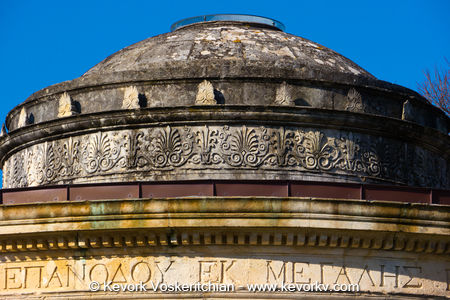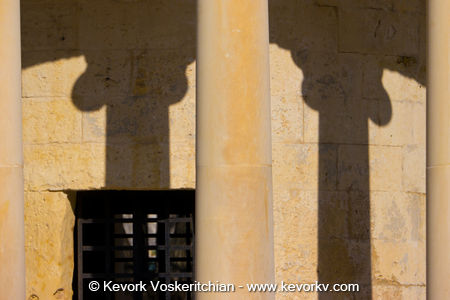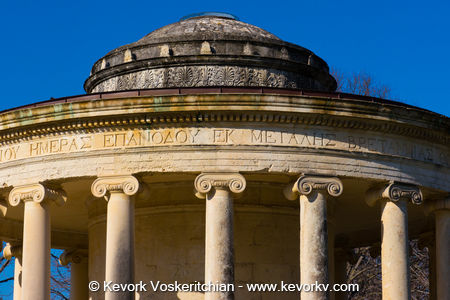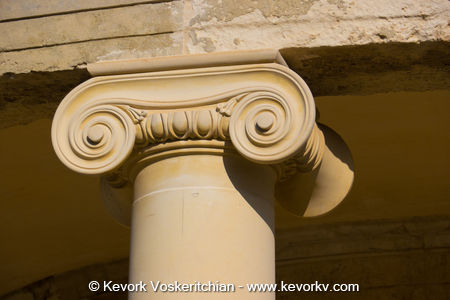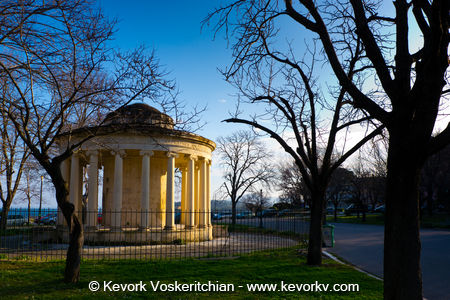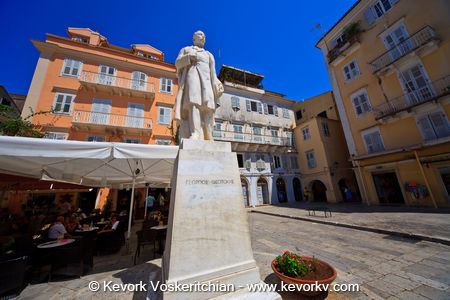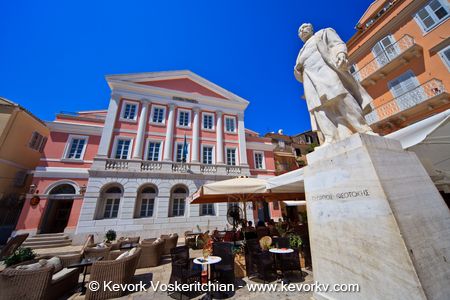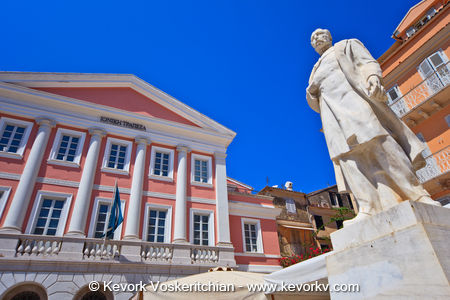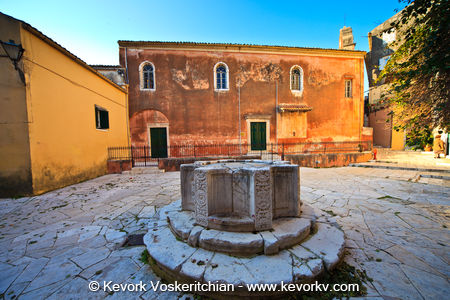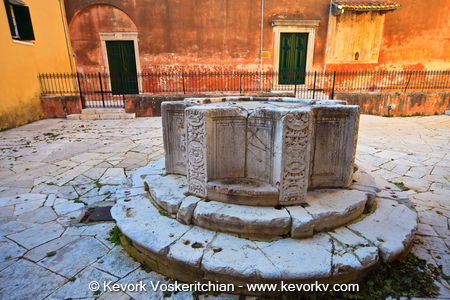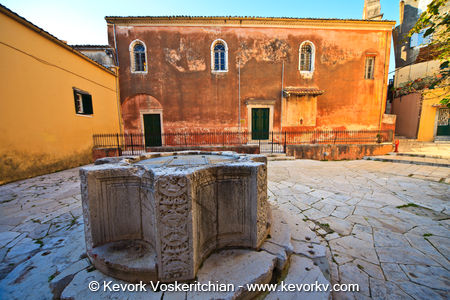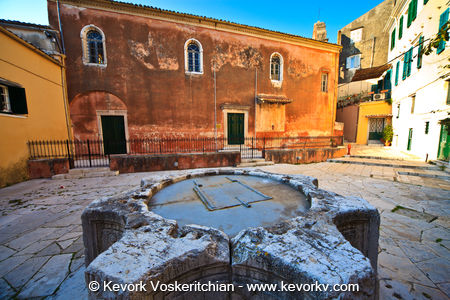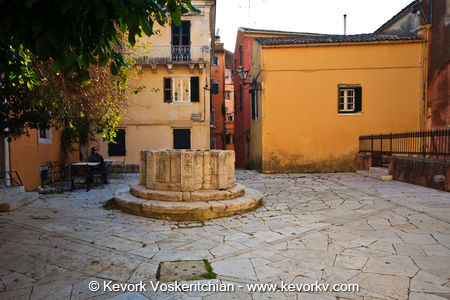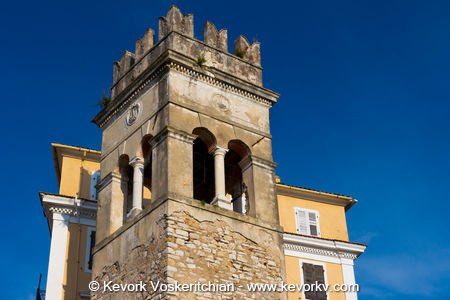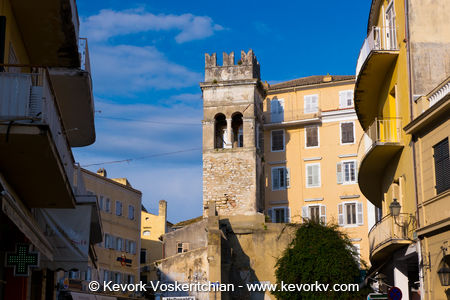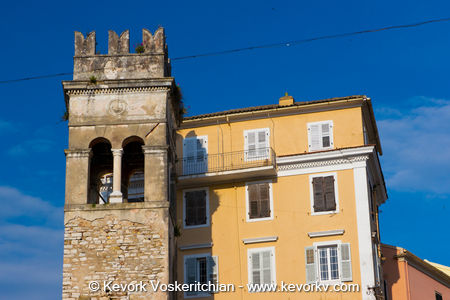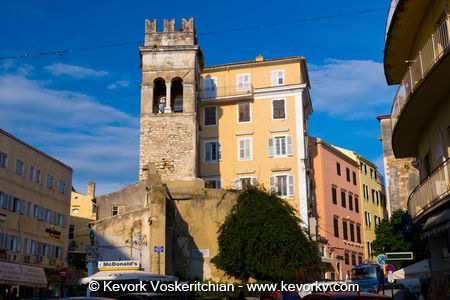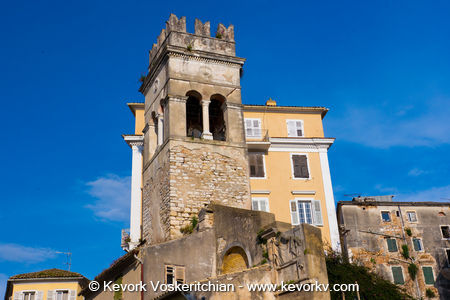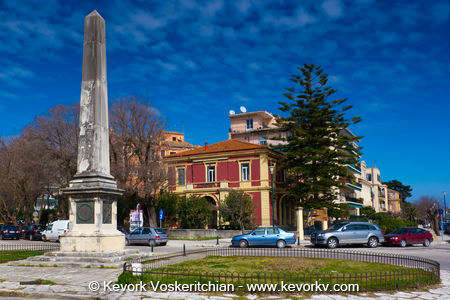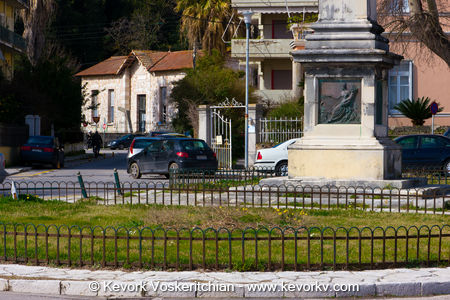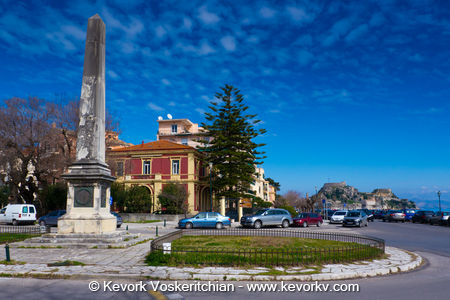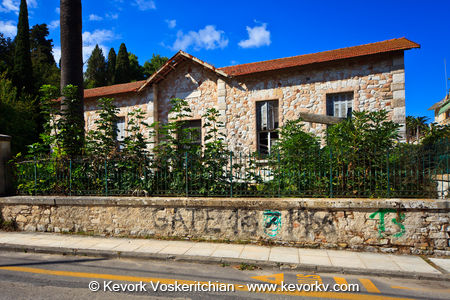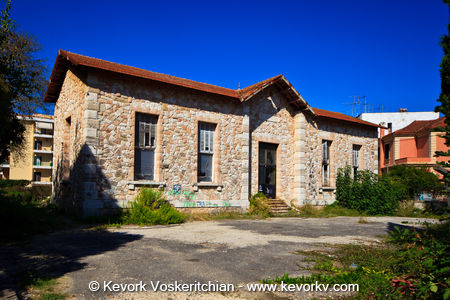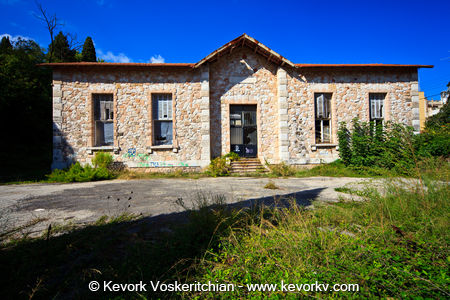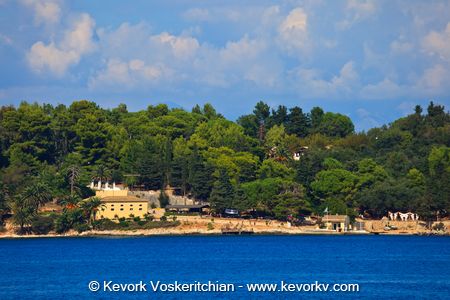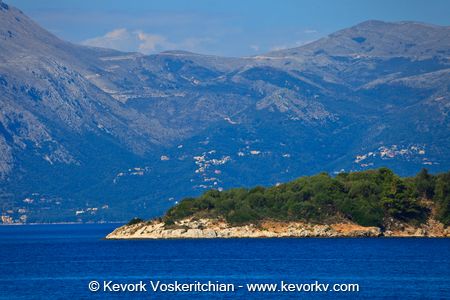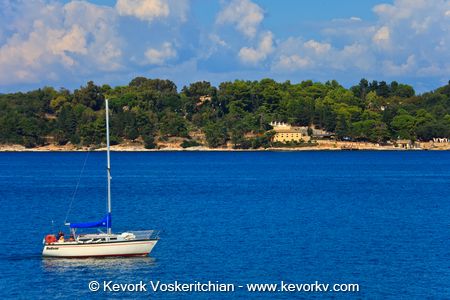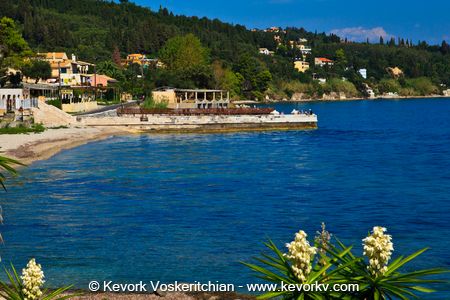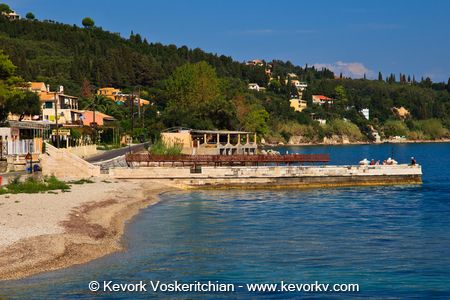

Corfus colorful history and cultural depth can in part be witnessed by the number and significance of the monuments that surround the town. Few islands of similar size have such a large number of monuments and unique perhaps is the number of monuments devoted to non Greek personalities. It is both difficult and often unfair to quantify the significance of monuments, but it would be fair to state that Ioannis Kapodistrias, the first governor of Greece, has been, the single most significant personality not only for Corfu, but Greece and to a some extend greater Europe.
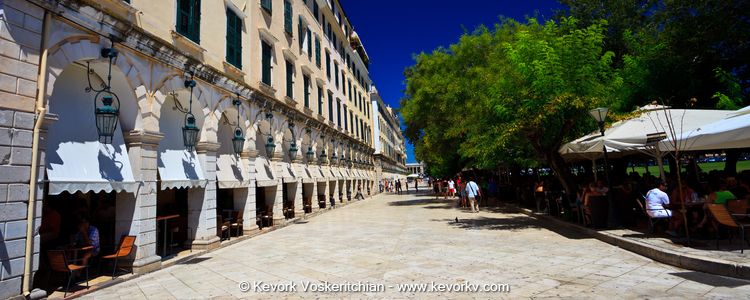
Ioannis Kapodistrias
At the end of Spianada Square you will see the statue of Ioannis Kapodistrias, the first Governor of the liberated Greece. He was born in Corfu in 1776. The statue was unveiled in 1887 and was created by means of donation made by a professor of the Ionian Academy who was a great admirer of Kapodistrias.
More ...
More ...
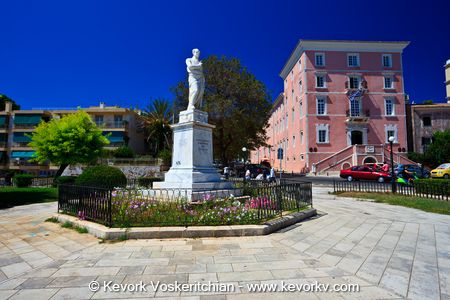
Dionysios Solomos
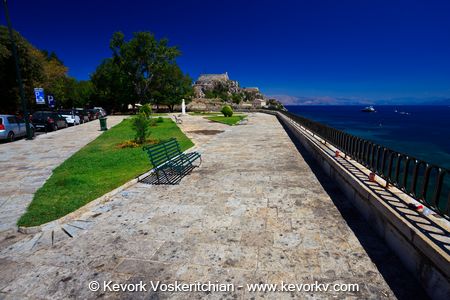
(8 April 1798 - 9 February 1857) Greek poet from Zakynthos best known for writing the Hymn to Liberty of which the first two stanzas on music by Nikolaos Mantzaros became the Greek national anthem in 1865. Considered the national poet of Greece - not only because he wrote the national anthem, but also because he contributed to the preservation of earlier poetic tradition and highlighted its usefulness to modern literature.
Mathias Von Der Schollenburg
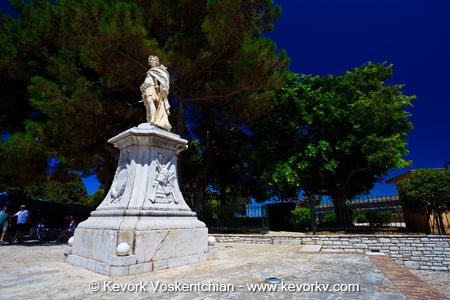
In honor of the Marshal whose contribution was determinative for the defense of the town from the Turks, in the siege of 1716. The statue is made with Carrara marble by Italian sculptor Antonio Gorradini. The latin inscription refers to the battle of the marshal during the 1716 siege and creation of statue during the same year
Durrell's Bosketo
A small garden with monuments of :
Lawrence Durrell
Frederic North, Count of Guildford
Poet Lorentz's Mavilis
Politician Kostandinos Theotokis
Lawrence Durrell
Frederic North, Count of Guildford
Poet Lorentz's Mavilis
Politician Kostandinos Theotokis
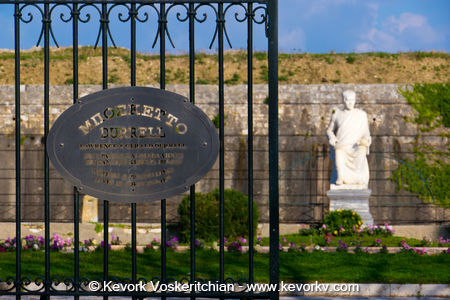
Lord Guildford
In honor of British philhellene Frederic North, Count of Guilford (1766-1827), who established the Ionian Academy under Commissioner Adams.It established the Greek language for the first time and operated for 40 years (1824-1864), until the Ionian Islands were unified with Greece.
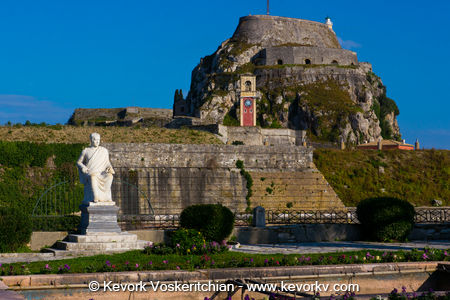
Lord Frederic Adams
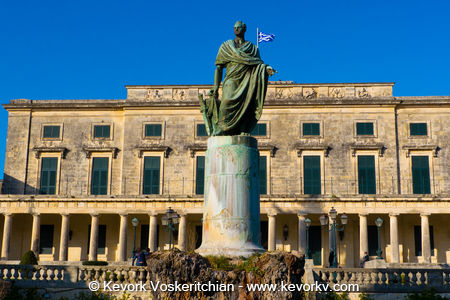
Enoseos Monument
A monument in honor of the unification of Eptanisa with Greece in 21 May 1864. Etched on the monument are the emblems of all Ionian Islands.

Maitland Rotunda
At the end of the Spianada Square there is the Peristyle of Maitland commonly called Cistern. It is a beautiful construction with twenty columns built from Maltese stone in Ionian style. It serves as a cover of a big Venetian cistern and was built by Corfiots to honour the first British Governor of the Ionian Islands Thomas Maitland (1816-1824).
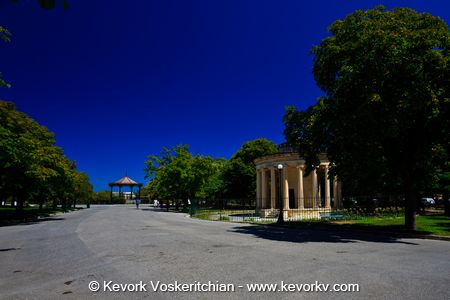
Georgios Theodokis
Born in Corfu (1844 - 1916) was a Greek politician and four times prime minister of Greece. He represented the New Party or Neoteristikon Komma (NK). He was the third child of Corfiote Nikolaos Andreas Theotokis.
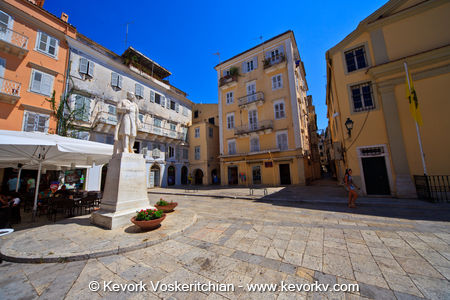
Kremasti Fountain
One of the most beautiful squares of the Old town of Corfu with its characteristic well in the center, is in front of the church of Panagia Kremasti, in Campielo. The well head, carved with stylized flowers and other symbols, was constructed by Antonis Kokkini in 1699 as a gift to the community.
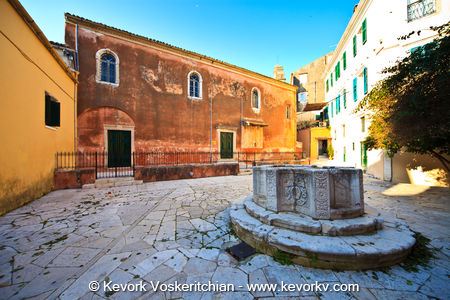
Annuciata
A monument of Pan European importance, this is where the Latin Nobles who were killed at the naval battle of Nafpaktos (1571) were buried. This naval battle ended Turkish threat by sea and a few years later the Turks would no longer constitute a threat for the land either, bringing all Turkish efforts to expand to the West to a final end.
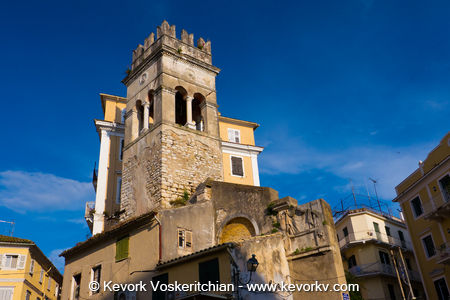
Douglas Obelisk
Erected in honour of the Lord High Commissioner Sir Howard Douglas, to whom Corfu owes a lot of public works and philanthropic institutions.
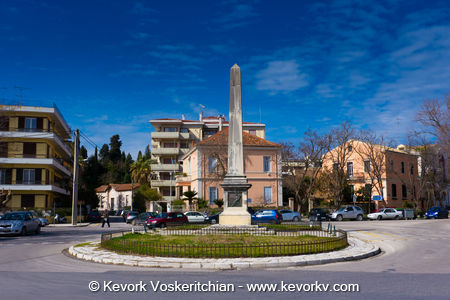
Menekrates Monument
Discovered in 1843 It bears inscriptions in the Corinthian alphabet which inform us that the cenotaph belongs to Menecrates, son of Thlasias and citizen of Ianthias (modern Galaxidi). In honour of his services to them, the Corfiots, together with his brother Praximenis, erected this monument around 600 BC.
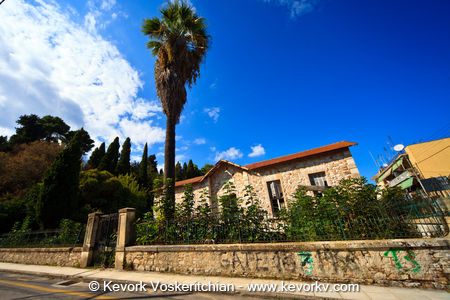
Vidos Islet
Fortified for the first time by the French and subsequently the British, transformed it into a completely invincible fortress which they demolished on their departure fifty years later. Later, the Serbian Mausoleum was constructed there in memory of soldiers of the Serbian army who were decimated by deprivation and plague at the end of the First World War. On the two hills where the main fortifications were built, the foundations still stand out quite strongly.
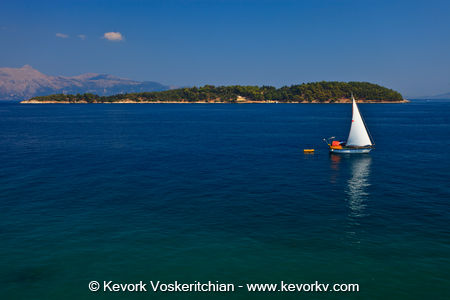
Lazaretto Islet
As the name indicates, this was formerly the quarantine island of Corfu, where Venetian galleys would stop before they were allowed to disembark. During the Second World War, it was the scene of executions of members of the Corfiot Resistance group by the Germans, and is now considered to be a national monument
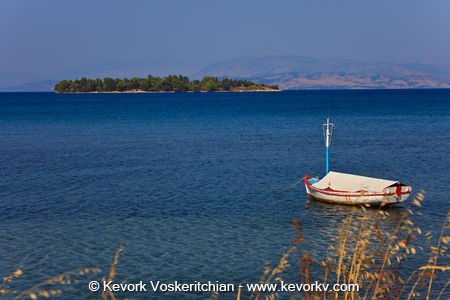
Kaiser's Bridge
Having purchased the Achilleion in 1907 after Sissi's death Kaiser Wilhelm II appointed Carl Ludwig Sprenger as the botanical architect of the Palace, and also built a bridge to be named by the locals after him: "Kaiser's bridge", to access the beach without traversing the road forming the island's main artery to the south. The bridge, arching over the road, spanned the distance between the lower gardens of Achilleion and the nearby beach; its remains, a monument to imperial vanity as well as impracticality, are an important landmark on the highway. The bridge's central section was, ironically, demolished during the German occupation of World War II to allow for the free movement of vehicles.
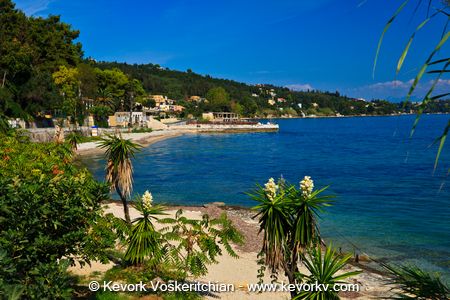


© 2016 All CopyRights Reserved
All content is copyrighted, no part my be copied, or used, for any reason, without the prior written agreement.
Any and all copyright violation will be legally prosecuted.
The Monuments





